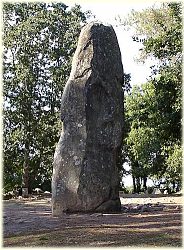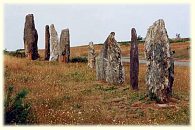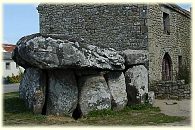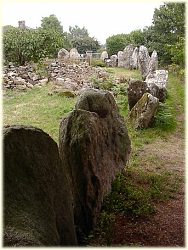Brittany
Brittany in north-western France has a superb variety and number of megalithic sites in this compact region - "a megalithic wonderland" as Burl wrote in 1985. Carnac with its fabled rows of standing stones is the jewel in the crown, but the other departments host treasures of their own, such as Kerloas in Finistère which is the tallest standing stone in Western Europe. The graceful curves of Dol can be seen in Ile-et-Vilaine.
Megalithic construction started earlier in Brittany than across the Channel, between 5000BC to 2000BC, starting in the Early Neolithic with the long passage graves and single stones. The long parallel rows of Carnac were built over a period from 3000BC onwards.
Carnac is a good place to start - as well as the famed rows, the area is densely populated with all types of prehistoric sites, from solitary standing stones, rows, passage graves and tumuli, all within a few kilometres of the town. Public access to wander in the most popular rows at Le Menec and Kerlescan was restricted in the mid-1990s, particularly in the summer months, but the scale of the rows is unmatched anywhere else. Ferry travellers from the UK arriving at St Malo, or coming down Cherbourg, will find a short detour to the attractive stone at Dol worthwhile.
Most of the megalithic sites are on the coastal regions, but the centre of Brittany has the mysterious Forest of Broceliande, which has some prehistoric sites which are pressed into service by the region's fondness for Arthurian legend.




